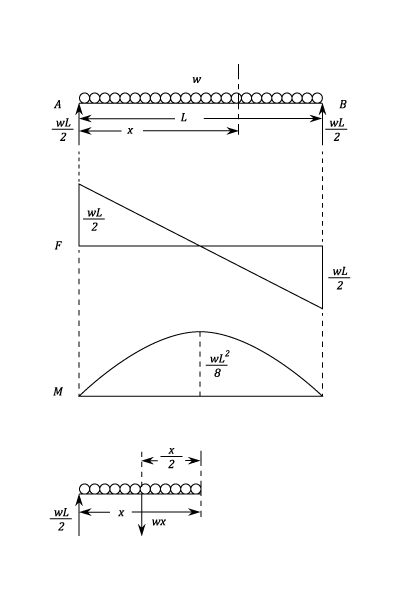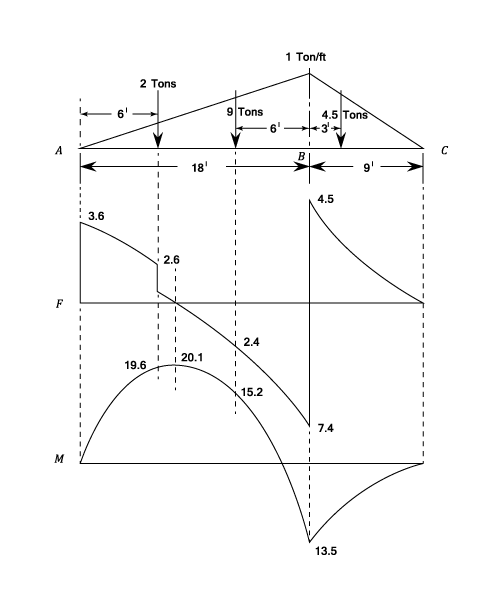Shear Force and Bending Moment
Introduction
MISSING IMAGE!
23573/0001.jpg cannot be found in /users/23573/0001.jpg. Please contact the submission author.
Shearing Force
MISSING IMAGE!
23287/SF-and-BM-0001.png cannot be found in /users/23287/SF-and-BM-0001.png. Please contact the submission author.
Bending Moments
MISSING IMAGE!
23287/SF-and-BM-0002.png cannot be found in /users/23287/SF-and-BM-0002.png. Please contact the submission author.
Types Of Load
A beam is normally horizontal and the loads vertical. Other cases which occur are considered to be exceptions. A Concentrated load is one which can be considered to act at a point, although in practice it must be distributed over a small area. A Distributed load is one which is spread in some manner over the length, or a significant length, of the beam. It is usually quoted at a weight per unit length of beam. It may either be uniform or vary from point to point.Types Of Support
A Simple or free support is one on which the beam is rested and which exerts a reaction on the beam. It is normal to assume that the reaction acts at a point, although it may in fact act act over a short length of beam.MISSING IMAGE!
23287/SF-and-BM-0005.png cannot be found in /users/23287/SF-and-BM-0005.png. Please contact the submission author.
The Relationship Between W, F, M.
In the following diagramMISSING IMAGE!
23287/SF-and-BM-0004.png cannot be found in /users/23287/SF-and-BM-0004.png. Please contact the submission author.
Concentrated Loads
Example - Example 1

- The shearing force suffers sudden changes when passing through a load point. The change is equal to the load.
- The bending Moment diagram is a series of straight lines between loads. The slope of the lines is equal to the shearing force between the loading points.
Uniformly Distributed Loads
Example - Example 3

Combined Loads.
Example - Example 4

Varying Distributed Loads.
Example - Example 7

The complete diagrams are shown. It can e seen that for a uniformly varying distributed load, the Shearing Force diagram consists of a series of parabolic curves and the Bending Moment diagram is made up of "cubic" discontinuities occurring at concentrated loads or reactions. It has been shown that Shearing Forces can be obtained by integrating the loading function and Bending Moment by integrating the Shearing Force, from which it follows that the curves produced will be of a successively "higher order" in x ( See equations (6) and(7))
Graphical Solutions
Note This method may appear complicated but whilst the proof and explanation is fairly detailed, the application is simple and straight forward. Earlier it was shown that the change of Bending Moment is given by the double Integral of the rate of loading. This integration can be carried out by means of a funicular polygon. See diagram. Suppose that the loads carried on a simply supported beam areMISSING IMAGE!
23287/SF-and-BM-0031.png cannot be found in /users/23287/SF-and-BM-0031.png. Please contact the submission author.
 Login
Login

